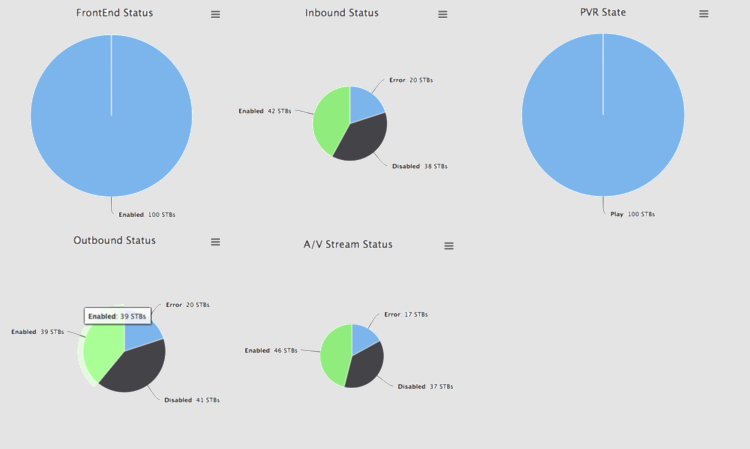What is QoE (Quality of Experience)?
A Comprehensive Guide | Delivering Top-Tier Network Experiences with QoE

Elevating User Satisfaction in Modern Networks

Introduction to Quality of Experience (QoE)
Quality of Experience (QoE) is a user-centric metric that evaluates satisfaction with digital services, particularly in telecommunications. In this sector, QoE plays a pivotal role in assessing how users perceive network performance during activities like voice calls, video streaming, and online gaming. It focuses on key factors such as call clarity, network reliability, latency, and buffering, which directly impact user satisfaction.
Unlike traditional performance indicators that focus solely on technical aspects, QoE incorporates subjective user feedback, offering a holistic view of the user’s experience. For telecom operators, QoE insights are essential for addressing customer concerns, optimizing network resources, and supporting innovations like 5G and IoT. By prioritizing QoE, providers can enhance customer loyalty, reduce churn, and differentiate their services in an increasingly competitive market
Since 2009, Axiros has been pioneering QoE solutions that access any IP service exactly as a user would, measuring quality from the user’s perspective. These QoE performance indicators are user-centric, whether it involves the time it takes to download a webpage, access a service, place a phone call, change a TV channel, or log into an interactive service. Axiros removes the guesswork from impact assessments, providing factual information to guide operations, prioritize investments, and build SLAs.
Quality of Experience Management
Quality of Experience Management (QoE Management) enables telecom brands and ISPs to monitor and enhance service quality by tracking customer satisfaction and addressing feedback proactively. Effective QoE Management reduces dissatisfaction, boosts customer retention, and identifies potential service issues before they escalate. It is a critical tool for maintaining high service standards and fostering long-term customer loyalty.
Quality of Experience Monitoring
QoE Monitoring assesses and analyzes user satisfaction with a service or application by measuring digital service performance from the user’s perspective. It integrates technical metrics and subjective user feedback to provide actionable insights. This ensures consistent service quality by identifying and resolving issues such as latency and buffering.
Why Choose Axiros for Monitoring and Management of Customer QoE?
Axiros' QoE monitoring solution is a powerful choice for telco brands and ISPs aiming to improve Customer Quality of Experience in data and VoIP services. It monitors QoE across various network types, including FTTX, DOCSIS, LTE, and DSL, with a device-agnostic approach that ensures consistent performance monitoring across all infrastructures and devices. The solution aggregates and analyzes extensive quality and traffic data, offering actionable insights to address performance bottlenecks and improve service delivery.
Its seamless integration with OSS/BSS systems simplifies adoption, avoiding extensive configuration changes while maintaining operational efficiency. With no need for third-party software, the solution streamlines implementation and reduces costs, making it a cost-effective and efficient choice.
Real-time data empowers service providers to proactively resolve issues, minimizing disruptions, improving network performance, and enhancing customer satisfaction. Its scalable, future-proof design ensures long-term reliability as networks grow and evolve. Axiros' QoE monitoring solution helps service providers consistently deliver exceptional experiences, reduce churn, and maintain a competitive edge in the dynamic telecom industry.
-
QoE solutions provide real-time insights into user satisfaction and network performance by tracking parameters like latency and error rates. They help identify and resolve issues proactively, optimize resource allocation, and improve overall service reliability. These measures enhance customer satisfaction, reduce downtime, and minimize operational costs, making QoE solutions integral to service improvement strategies.
-
Businesses can improve QoE by analyzing monitoring data to identify key issues and prioritize impactful solutions. This may include optimizing network performance, leveraging predictive analytics, and implementing regular system updates. Staff training and a customer-centric approach—where user feedback guides service enhancements—are also essential for maintaining high QoE standards.
-
QoE Monitoring is essential for ensuring user satisfaction and loyalty. By addressing issues like poor audio-visual quality or service interruptions, providers can meet user expectations and improve customer retention. It also offers insights into user behavior, enabling providers to tailor services and maintain a competitive edge in the market.
Challenges of Undifferentiated Service Quality in Modern CSPs
Today, CSPs often do not differentiate the quality of their services or offer special incentives based on revenue potential. Most service policies are based on a best-effort approach, treating all customers and services equally, which results in shared bandwidth and common network latency and speed issues.
This lack of differentiation, particularly for data-heavy and latency-sensitive services like video, leads to reduced QoS and poor customer experience. Additionally, the best-effort delivery model limits CSPs' ability to offer personalized services to premium customers, leading to missed opportunities for upselling and bundling.
Undifferentiated QoE also frustrates premium customers, who expect personalized service, as seen in sectors like banking and retail. Moreover, poor experiences deter consumers from engaging with content, reducing revenue potential across the Telco-Media industry.
Our QoE Based Products
All Axiros products can be deployed and operated “On-Premises” or “as a Service”.


